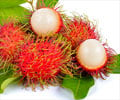A study in fruit flies reveals that they are attracted to carbonated water – something that may help explain why humans are so fond of fizzy drinks.
The study was conducted by scientists at the University of California, who says that studying fruit flies is helpful as the insects share similar genes with humans.“Fruit flies contain similar versions of many human genes, which is why we study them for a variety of health issues, including taste,” Nature quoted James F. Battey, Jr., M.D., Ph.D., director of the NIDCD, as saying.
“This research raises the question of whether people also may have the ability to taste carbon dioxide and perhaps other chemicals in food. If this were found to be true, our sense of taste could be even more complex than we realize,” he added.
According to the researchers, fruit fly are more attracted to sugar than carbon dioxide, so for them it works as a flavour enhancer which also helps them scout for the kind of food they are attracted to.
Human taste occurs through taste cells and sensory cells that are clustered in the taste buds of the mouth, tongue, and throat and that express certain proteins, called receptors. When the mouth tastes foods and drinks these receptors get activated by specific chemical called tastants which are found in foods and drinks. An electrical signal is generated, which travels to the brain when the receptor gets activated by tastants.
Similar is the case with the fruit fly, the difference being that they have taste neurons instead of taste cells, and the taste neurons are found in structures called taste pegs and taste bristles which are concentrated on the labellum, the equivalent of a tongue, which is housed in the proboscis, a long tubular structure originating from the fly’s head.
Advertisement
The team first tested the taste neurons, called E409 which had not been characterized before and were not already associated with known taste receptors for sweet and bitter.
Advertisement
Next, the researchers tested the E409 neurons and found that substances high in carbon dioxide were drawn out to heightened neuron activity as opposed to substances low in carbon dioxide.
Finally, it was proved that fruit flies are attracted to solutions with high carbon dioxide concentrations.
The team also wanted to know if the two senses influenced one another, since fruit flies have the ability to smell carbon dioxide. Under normal conditions, when fruit flies smell carbon dioxide in the air, they prevent it.
The team showed that fruit flies that had their E409 neurons avoided high carbon dioxide concentrations in the environment.
Flies with missing antennae, were attracted to solutions with high carbon dioxide concentrations.
As a result, it was concluded that fruit flies use both senses of taste and smell separately to determine their environment for a potential food source.
“Our model is that flies like high local concentrations of carbon dioxide,” says Scott.
“So if carbon dioxide is being produced by the yeast, flies taste it and they like it. But if there are increased global levels of carbon dioxide in the air—such as if a food source becomes spoiled and potentially toxic—then flies are repelled by it. So we think by having these two different carbon dioxide detectors, flies are able to compare global to local levels of carbon dioxide and then regulate their behavior accordingly.”
Source-ANI
SRM/J











